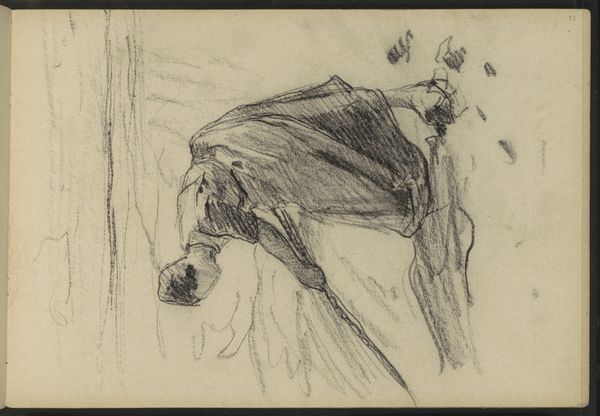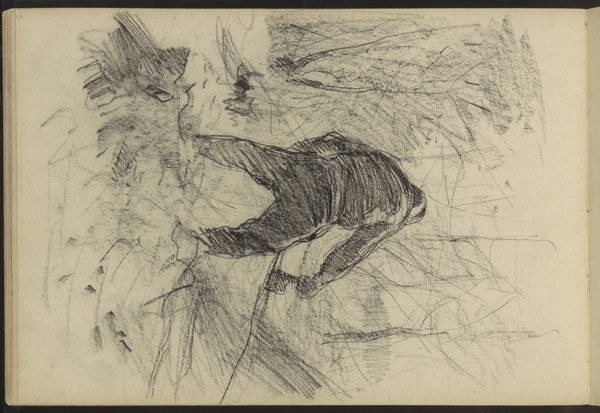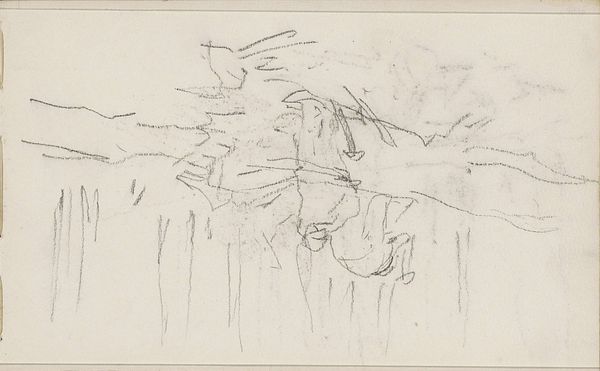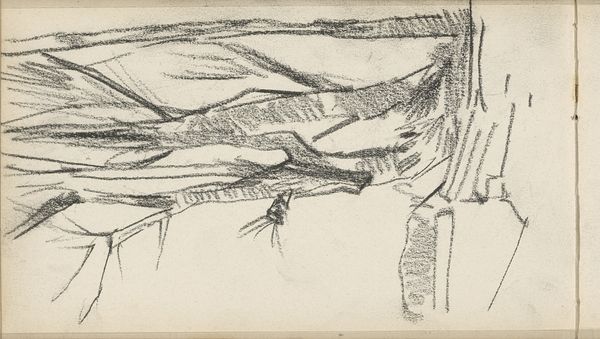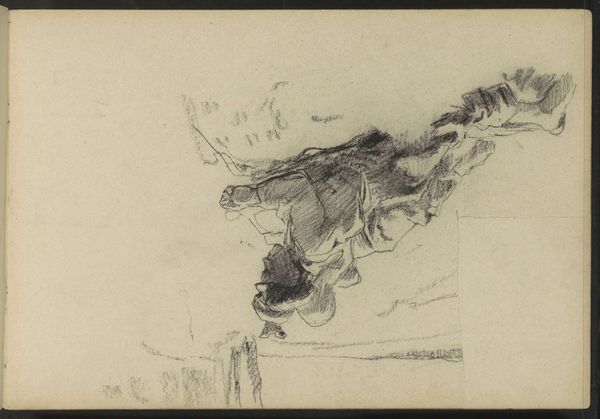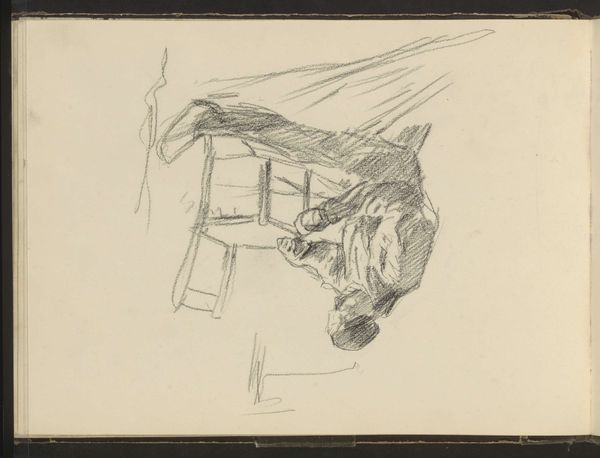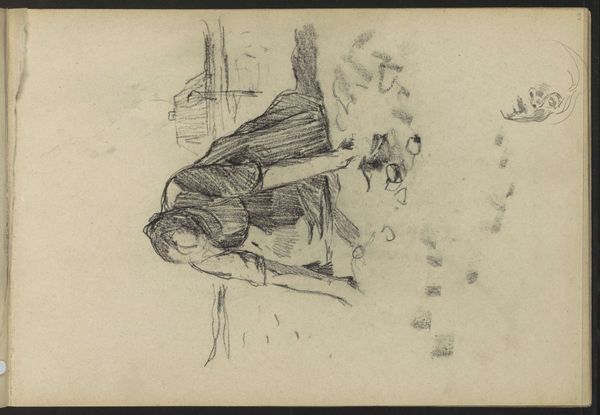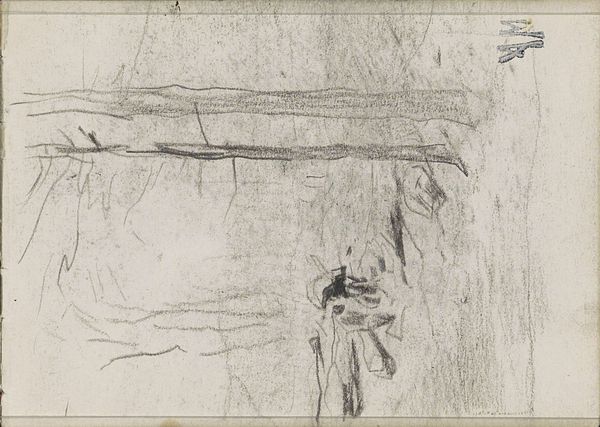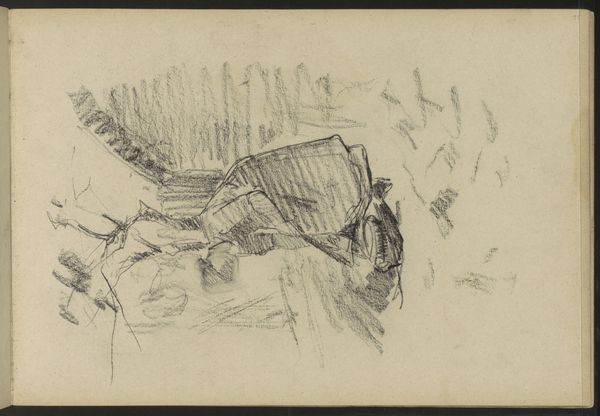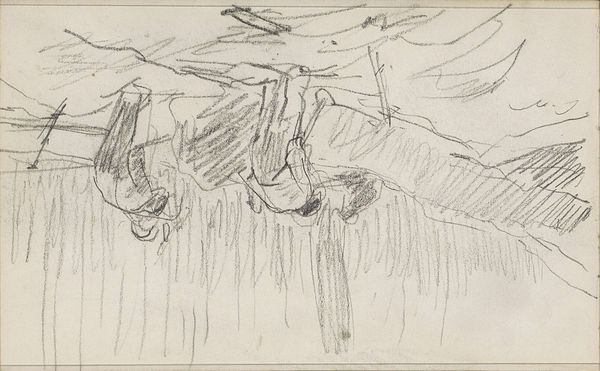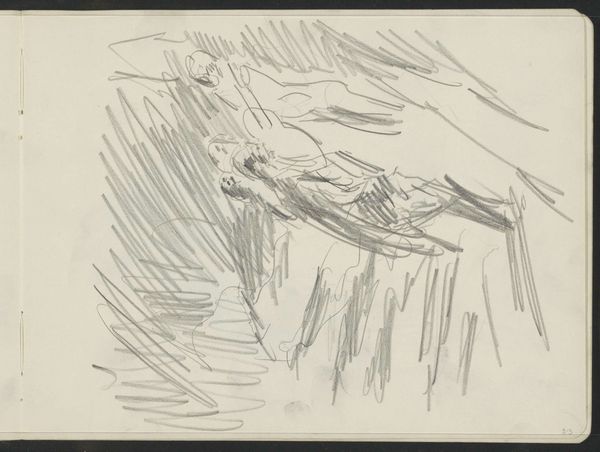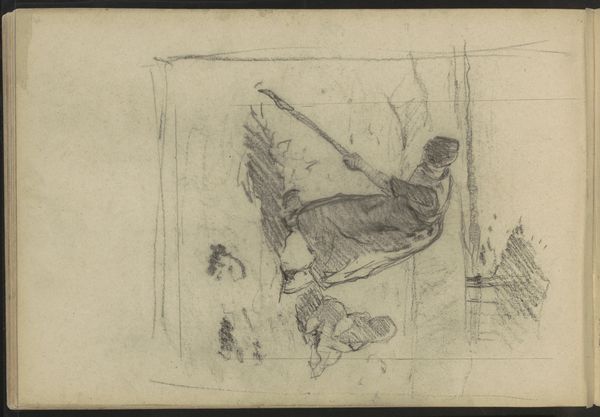
drawing, pencil
#
drawing
#
ink drawing
#
impressionism
#
pen sketch
#
pencil sketch
#
landscape
#
pencil
#
naturalism
Copyright: Rijks Museum: Open Domain
Curator: This is a pencil drawing titled "Vrouw bindt een bos takken aaneen", which translates to "Woman Binding a Bundle of Branches", by Willem Witsen, dating from around 1884 to 1887. It resides here at the Rijksmuseum. Editor: My first impression is one of quiet labour. It's a fleeting, almost ephemeral sketch, but the density of the pencil work gives it a grounded, sturdy feeling. Curator: Indeed. Witsen, who was associated with Dutch Impressionism and Naturalism, often focused on capturing everyday scenes, and this drawing speaks to the realities of women's work in rural settings. How might this image challenge conventional idyllic portrayals? Editor: The bundled branches she's preparing-- perhaps for fuel or construction --immediately connect her to ancient earth mother symbology and practical resourcefulness. There's a stoic dignity, too; this isn't romanticized peasant life. She's interacting with her landscape. What might this activity mean to the construction of feminine identity in the 19th century? Curator: Absolutely, by depicting this woman engaged in what was likely a repetitive, physically demanding task, Witsen touches upon gendered labor roles and expectations. We could consider the intersectionality of gender, class, and rurality; in other words, how did societal structures restrict opportunity? The composition is important as well. The drawing gives significance to work that's been traditionally undervalued. The downward looking perspective even brings her to the audience level. Editor: You mentioned Witsen's artistic period. What symbolism might he have gained from depicting the landscape behind the women? The forest seems to loom and is presented in quite a stark, imposing tone. Curator: It is stark! In many cultures, forests can be interpreted as both nurturing and dangerous. We could even venture to explore it from a psychoanalytical lens and see the forest's imposing visual as symbolic of inner trials to overcome, the darkness representative of her situation and position in life at that period. Editor: It also emphasizes this interplay between a human element and our surroundings. Thank you for that historical grounding! Curator: My pleasure. By understanding the intersections of history, artistic style, and the complex symbols inherent to this era we gain insight into these compelling, albeit quickly composed pieces.
Comments
No comments
Be the first to comment and join the conversation on the ultimate creative platform.
